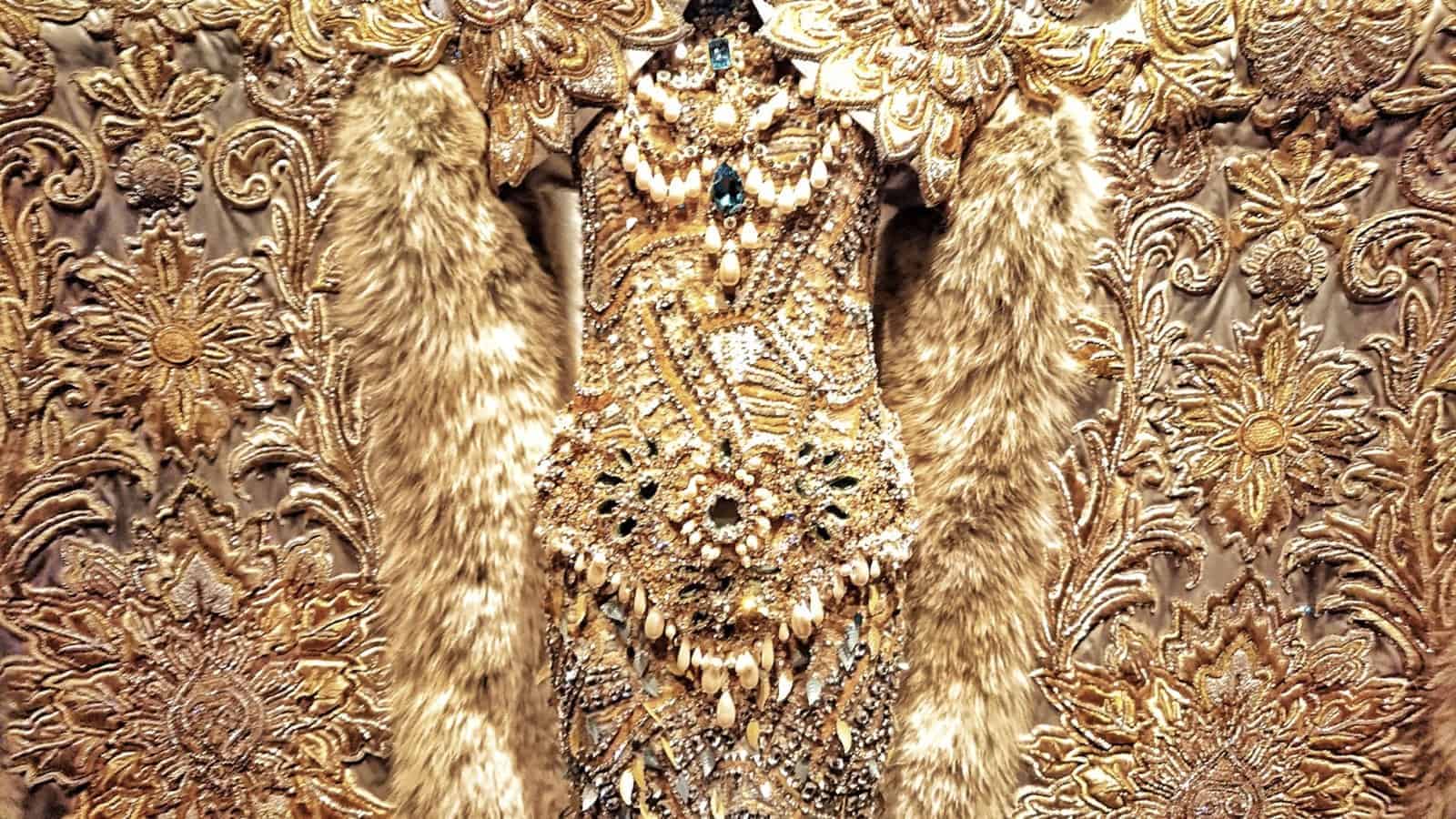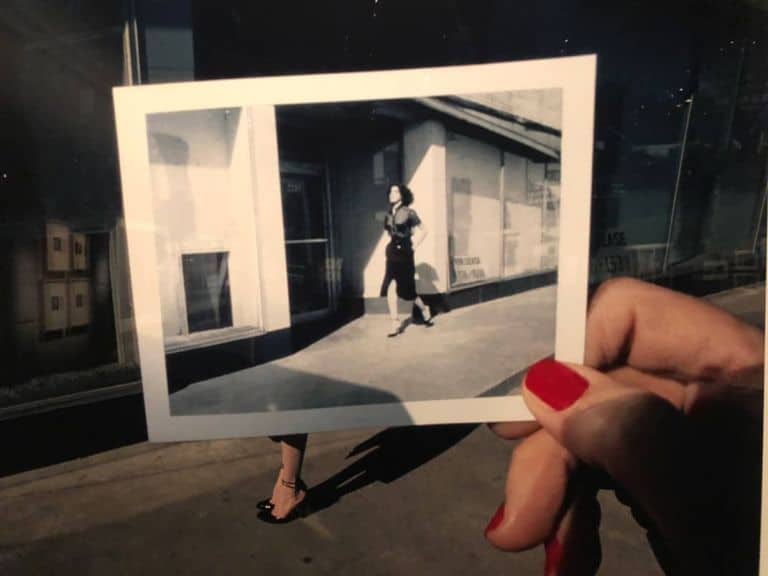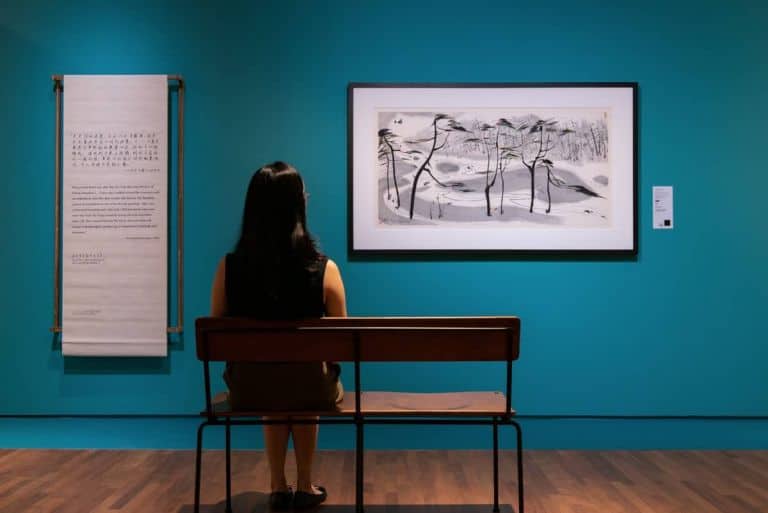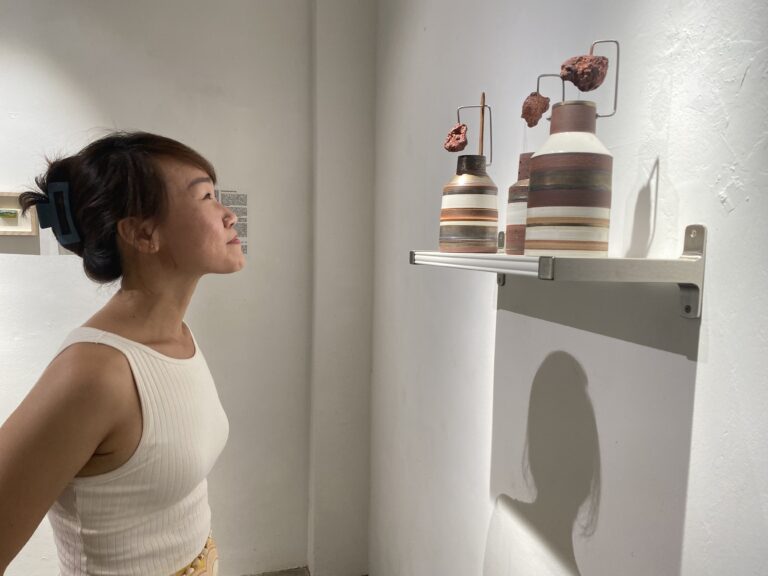If you were to try to imagine or guess what Chinese couturier Guo Pei looks like based solely on her couture designs, you would be likely to arrive at the conclusion that she is a flamboyant, over-the top, larger-than-life character. Extrapolating from the dense opulence of her dresses, many of which are so overloaded with accoutrements and precious metals as to be almost unwearable, Guo could be a dowager from an ancient Chinese imperial court, regal, patrician, embroiled in palace intrigues; a cheongsam-clad Anna May Wong ready for her closeup; or the quintessential East Asian Power Woman, a Wendi Deng Murdoch clone clad in furs and diamonds, ready for red at the stock exchange, poised for murders and acquisitions. So whole-heartedly do her couture creations embrace the high drama aspirations of evening soap operas that they venture dangerously close to camp territory on occasion.

In real life, fortunately or not, Guo Pei is a vastly different person. A petite, feminine and understated woman in her early fifties, it is hard to believe that the Guo who takes press queries with a warm, bland courtesy and hesitates as she formulates either coyly oblique or predictably politically correct answers to potentially contentious questions, could be the same designer of frocks so excessive in their ornamentation that one piece alone took up to fifty thousand man-hours in her five hundred-strong atelier in China to make.
Watching her at a press conference against a backdrop of what is arguably her most famous creation, the iconic 黄皇后 (Yellow Queen) cape worn by Rihanna to the 2015 Met Gala, one is made acutely aware of the enormous cultural capital available at her dainty fingertips and just how critical she is to the fabric of the ongoing Chinese cultural renaissance. The exhibition in question, Guo Pei: Chinese Art and Couture, is itself the introduction to the Asian Civilisations Museum’s Season of Chinese Art. And Guo has barely moved a muscle.

Herein, perhaps, lies her allure. She makes no grand promises, no sweeping claims in abstract terms about her art; instead she quietly delivers intricate, magnificent works that blur the line between what is wearable and what is not, creating fabric sculptures that pay homage to the extensive visual references she draws from across history and geography. In Magnificent Gold, the aforementioned fifty thousand man-hour dress, long panels of brocade are fitted over a bell-shaped armature and allowed to flare out onto the floor, producing a voluminous skirt that evokes the domes of religious architecture. Here, the inspirations are thangkas, Tibetan embroidered textiles or paintings that depict scenes, deities, or mandalas from Buddhist lore, which Guo uses as teaching aids in her Beijing atelier, Rose Studio, to train embroiderers.
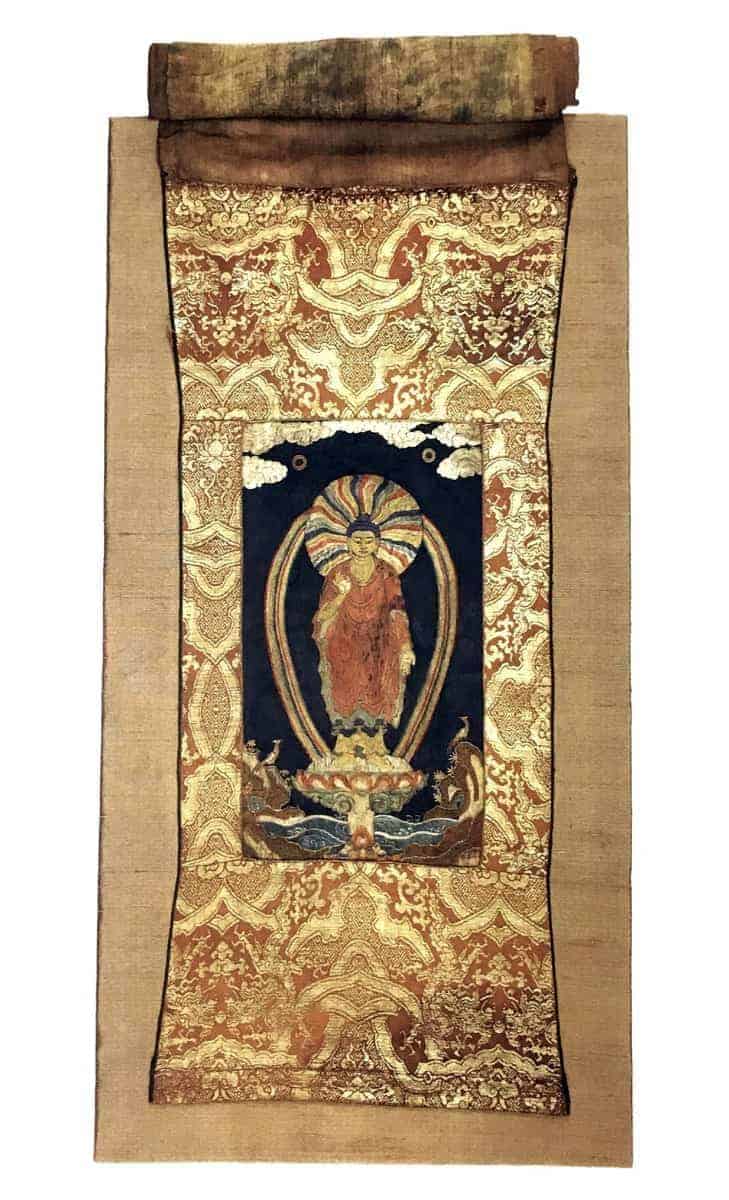
In another work, Blue-and-White Porcelain, Guo’s commitment to the centuries-old Chinese craft of hand-drawing and hand-painting patterns onto porcelain is realised in a stunning couture creation that gathers layers of meticulously painted fabric into three-dimensional panels resembling shards of shattered porcelain, bringing together a resolutely traditional motif and a starkly contemporary silhouette that binds the viewer firmly to the modern era.
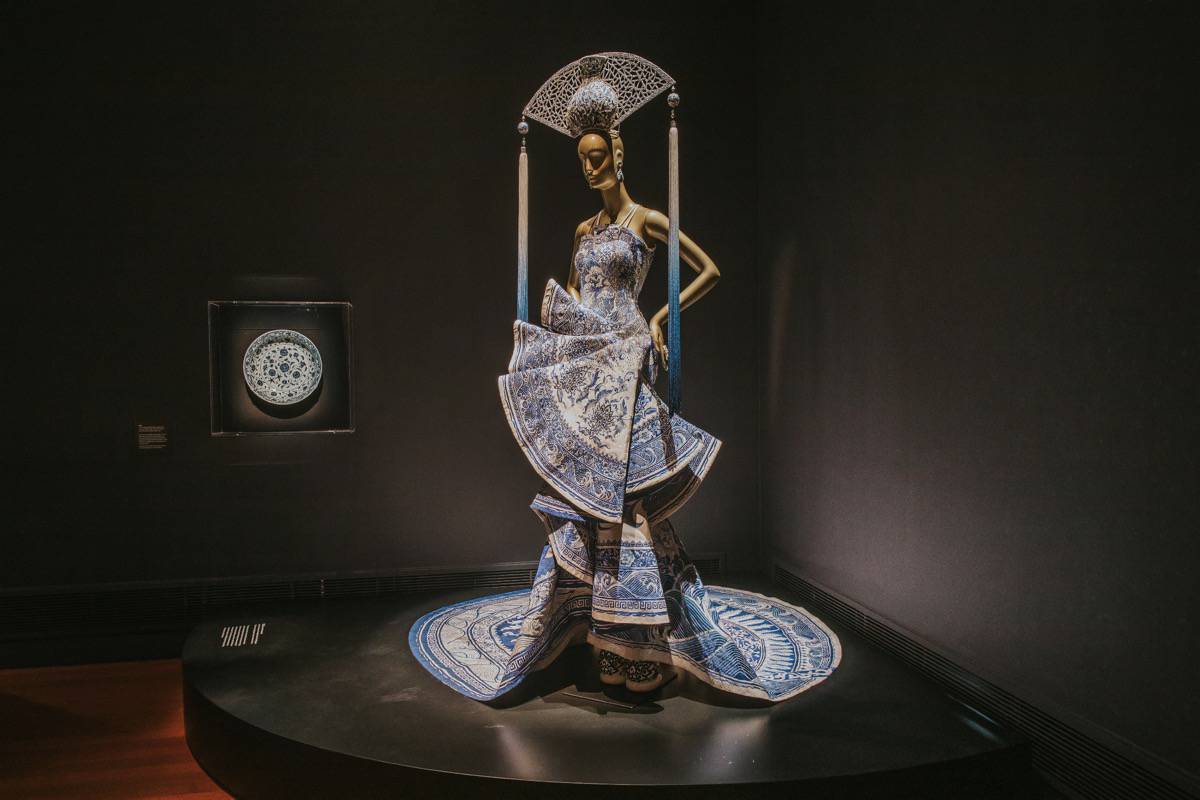
Organised broadly into three categories, Gold is the Colour of My Soul, China and the World, and Treasured Heirlooms, the exhibition also attempts to chart Guo Pei’s life story alongside China’s historical cosmopolitan trade ties, before ultimately resolving the narrative by delving into Guo’s interpretation of the traditional Chinese wedding garment, as a means of bridging the past and the now.
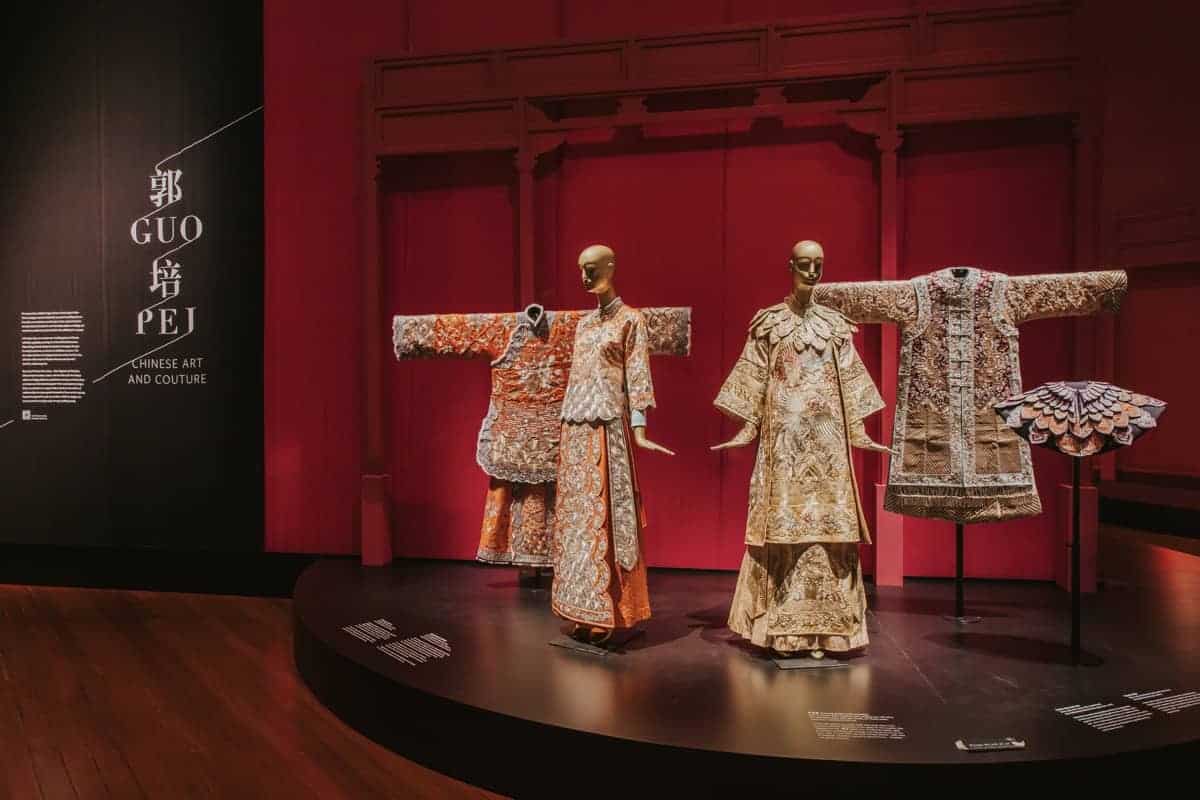
Throughout Guo’s works, the re-appropriation of iconography and subsequent blending of elements that have caught her eye from around the world is a constant theme. This makes for interesting visuals, particularly because her fondness for merging Chinese imagery onto Western silhouettes tends to result in designs that dwell in interstitial spaces, subverting yet reinforcing a certain Orientalist impression of Chinese visual culture and fashion.
Despite the excellence in the formal techniques deployed to craft the garments, the works, on occasion, seemed to lack a certain wider contextual sensibility, seemingly committed only to achieving aesthetic grandeur by piling as much of everything on as possible and featuring East-West fusion elements just for the sake of it. In the words of a particularly astute observer, Guo’s designs give one the sense of being “exportware, reimported.”
Perhaps more importantly, despite the general buzz surrounding the exhibition, there appears to be a lack of intelligent and informed fashion, architecture and design criticism in the region that might serve to help the general public to contextualise their experiences with lived visual culture. The absence of these creators of discourse is troubling for what it represents: an overall lack of understanding and appreciation of the power that design and visual culture can wield over how life can be represented and experienced.
While fashion and visual art have always been good bedfellows – Dali and Schiaparelli come to mind, as do Yves Saint Laurent and Piet Mondrian – the larger-than-life architectural garments of Guo Pei seem to represent a whole new frontier, blurring the boundaries between fashion and art itself, representing anything from merely really heavy glitzy dresses to important cultural artifacts that are infused with memory and meaning. Only time will tell if these works will come to be regarded as ageless works of art or reach the end of their moment in the current zeitgeist and fade into obsolescence. Much like King Midas, whatever Guo Pei touches seems to turn to gold – but at the end of the day, gold can neither simulate nor sustain life. It is only by going beyond the confines of mere splendour, to deeply and critically examine the human stories that lie beneath the surface, that a work of art may be remembered and endure.
